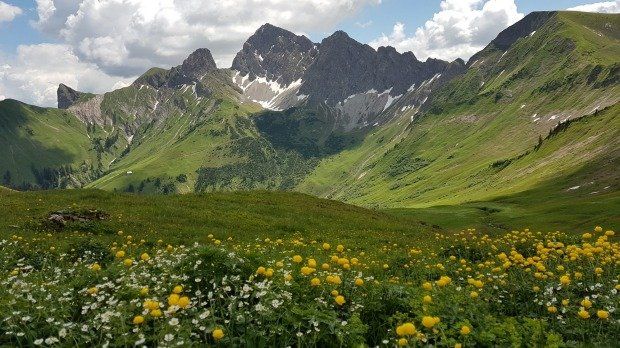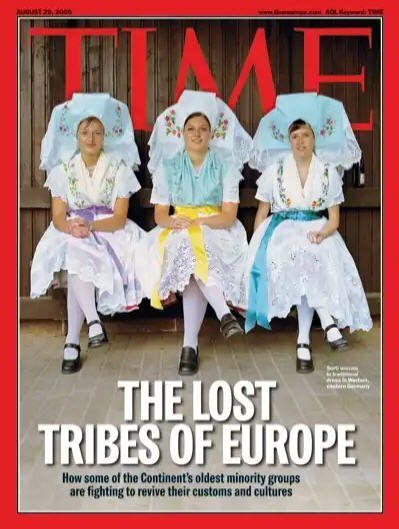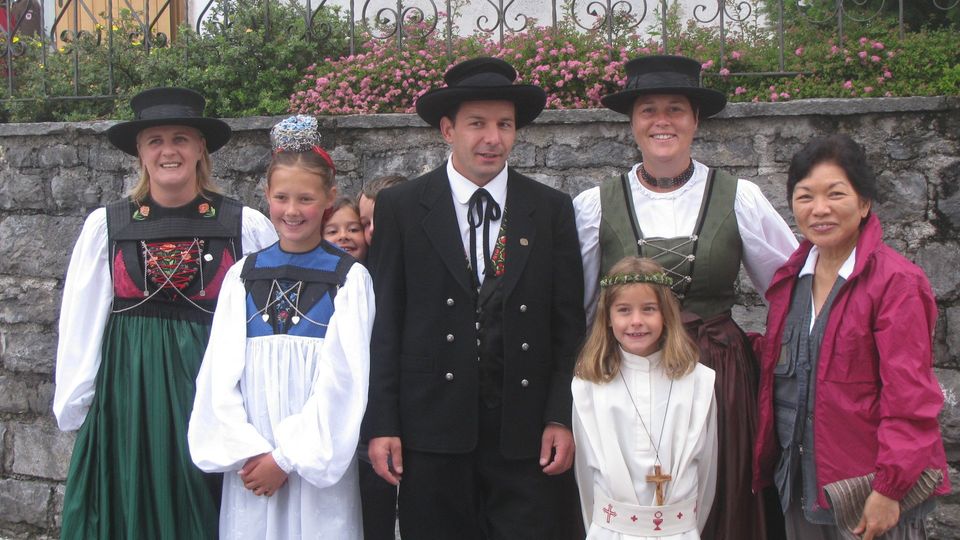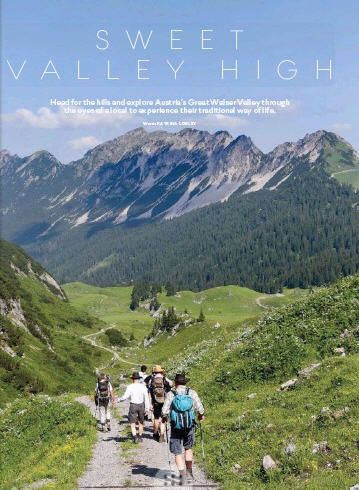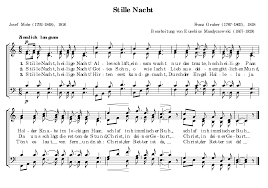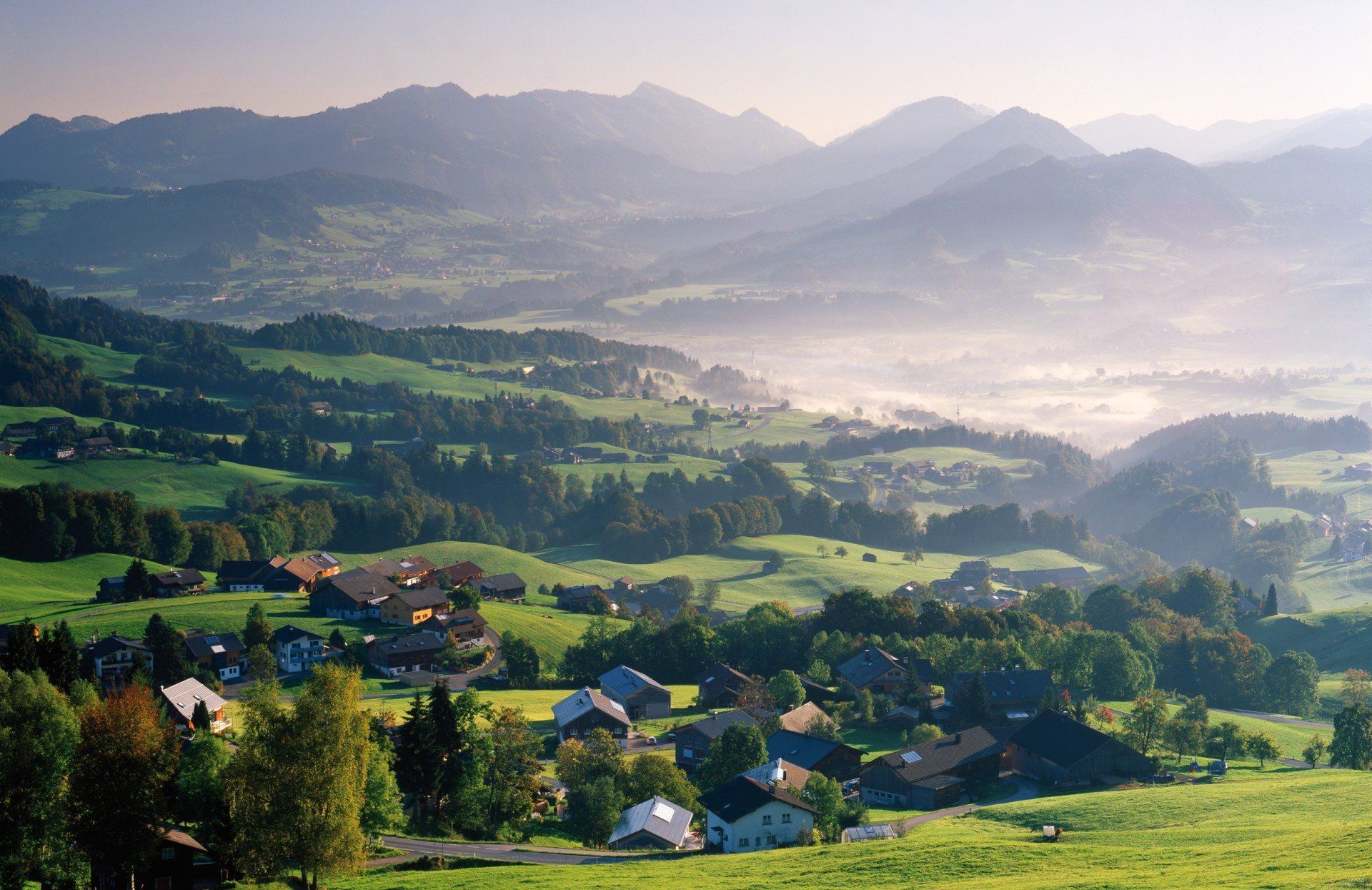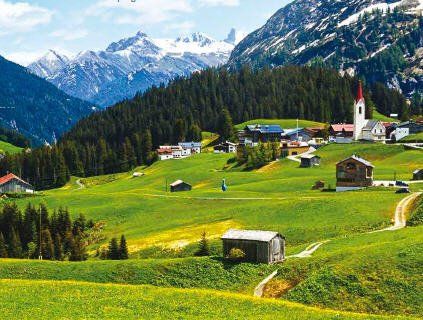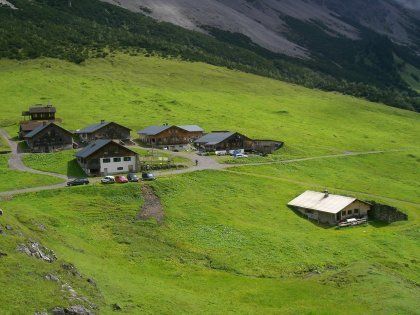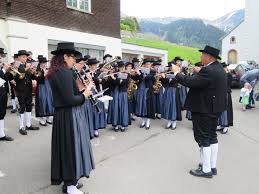By Catherine Marshall
•
October 5, 2019
"Never pick flowers in the springtime before the bees have sipped their fill of nectar", says Walser woman Elisabeth Burtscher, " and always leave the blooms alone when it has rained, for if they're sodden when you pluck them, they won't be able to transmit energy stored from the sun." "You don't need to tell anyone in this valley not to do this – they know it's the rule of nature," she says. "We don't just collect plants, we collect wisdom and healing." Elisabeth imparts this ancient knowledge as we walk through wildflower-speckled grasses in the village of Fontanella in Austria's western-most province, Vorarlberg. Tucked between Lake Constance and the Austrian Alps, this region encompasses Grosses Walsertal, or Big Walser Valley, a UNESCO Biosphere Reserve and European Destination of Excellence which has been inhabited by the Walser people since they arrived here from neighbouring Switzerland in the 14th century. Settling in the high Alps – beyond the reach of meddling authorities – the Walsers forged a winter-toughened, hard-working, resourceful mountain culture of which Elisabeth and her family remain guardians today. So devoted is her son, Patrick Burtscher, to his Walser heritage (and the mountains which moulded him), he returns here each year from his adopted home, Melbourne, with his Australian wife Maree and their two young children, Levin and Kiera. The couple run a Nordic Walking academy in Australia but, come spring (and, as of next year, winter), they change codes, guiding guests on alpine walks through Grosses Walsertal with their boutique company, Austrian Alps Active. This is Patrick's childhood playground. He spent his earliest years exploring these mountains, became Austria's youngest ski instructor at just 16 and was principal of the local school. It's a homecoming of sorts for Maree, too. After meeting Patrick in Australia she spent two years here with him, exploring a little-known pocket of Austria interlaced with unblemished rivers and valleys, meadows and limestone peaks – and those flowers and herbs so cherished by the Walsers. Now Elisabeth is taking petals from paper bags and laying them on a lace cloth so old she fears it will fall apart if she touches it. She encourages me to do the same. "I could prepare easily a table like this as you have in a buffet, but you have to do it yourself," she instructs. "It's very important for you to do things using both hands. These days you just spend hours and hours using one finger to move the mouse." And so I add my offerings to Elisabeth's botanical smorgasbord, and we select from it clippings with which to create pots of berg tea: stinging nettle and sage, blackcurrant and elderflower, dandelion and red clover and raspberry. The tea, drunk for aeons by the Walser people, is ambrosial and deeply soothing, tasting of nectar left over by the quenched bees. Outside, where the mountains yawn open to reveal secretive valleys, the air is mint-fresh. Across the ravine is the village of Marul, sinking slowly down the hillside each year. High above it, along a zigzagging road, is Alpe Laguz, gateway to the region's highest peak, Rote Wand. From here, one Alp impedes our view of the next. Their ice-licked peaks soar into the clouds from an earthly bed of emerald green. Nature's tableau is disturbed only by a scattering of summer huts and cows grazing on alpine grass and wildflowers. The herd's milk will be churned into organic Alpkase (cheese made from the milk of Alp-grazed cows) – the most coveted and lofty of cheeses produced in this biosphere. But the clouds are gathering about us now, a ghostly cloak erasing the view. Dewdrops speckle our faces as we wander up and over Garmil Pass, passing along the way Breithorn Mountain, whose limestone precipices are concertinaed together like organ pipes. "This is where the European and African tectonic plates collide, which is why the mountains are moving," says Patrick, explaining why that little village of Marul is subsiding into its lush foundations. The mountains are faint etchings behind the fog now, the elderflowers bright quivers in the grass. At Martha's Hut, which materialises fairytale-like from the mist, Martha Bickel is mixing elderflower spritzes and ladling kasknopfle, a traditional dish of pasta buttons and rich alpine cheese, on to our lunchtime plates. "If you don't finish the pot," she warns, "there will be bad weather tomorrow." We require no such inducement, for the brisk walk and crystalline air has sharpened our appetite. We return for seconds and knock them back with shots of home-made schnapps.
